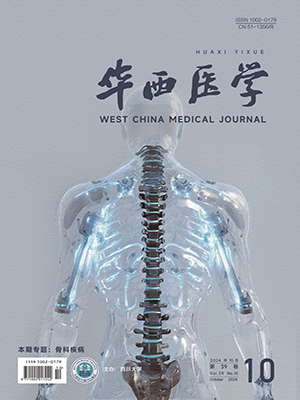| 1. |
Schirrmann T, Al-Halabi L, Dübel S, et al. Production systems for recombinant antibodies[J]. Fronti Biosci, 2008, 13: 4576-4594.
|
| 2. |
Jordan E, Hust, Roth A, et al. Production of recombinant antibody fragments in bacillus megaterium[J]. Microb Cell Fact, 2007, 6: 2.
|
| 3. |
Austin C. Novel approach to obtain biologically active recombinant heterodimeric proteins in E. coli[J]. J Chromatogr B Ana-lyt Technol Biomed Life Sci, 2003, 786(1-2): 93-107.
|
| 4. |
Kolaj O, Spada S, Robin S, et al. Use of folding modulators to improve heterologous protein production in Escherichia coli[J]. Microb Cell Fact, 2009, 8: 9.
|
| 5. |
Makrides SC. Strategies for achieving high-level expression of genes in Escherichia coli[J]. Microbiol Rev, 1996, 60(3): 512-538.
|
| 6. |
Schein CH, Boix E, Haugg M, et al. Secretion of mammalian ribonucleases from Escherichia-coli using the signal sequence of murine spleen ibonuclease[J]. Biochem J, 1992, 283(1): 137-141.
|
| 7. |
Derman AI, Prinz WA, Belin D, et al. Mutations that allow disulfide bond formation in the cytoplasm of Escherichia-coli[J]. Science, 1993, 262(5140): 1744-1747.
|
| 8. |
Jurado J, de Lorenzo V, Luis A, et al. Thioredoxin fusions Increase folding of single chain Fv antibodies in the cytoplasm of Escherichiacoli: evidence that chaperone activity is the prime effect of thioredoxin[J]. J Mol Biol, 2006, 357(1): 49-61.
|
| 9. |
Dammeyer T, Steinwand M, Krüger SC, et al. Efficient production of soluble recombinant single chain Fv fragments by a Pseudomonas putida strain KT2440 cell factory[J]. Microb Cell Fact, 2011, 10: 11.
|
| 10. |
Jurado P, Ritz D, Beckwith J, et al. Production of functional single-chain Fv antibodies in the cytoplasm of Escherichia coli[J]. J Mol Biol, 2002, 320(1): 1-10.
|
| 11. |
Bessette PH, Aslund F, Beckwith J, et al. Efficient folding of proteins with multiple disulfide bonds in the Escherichia coli cytoplasm[J]. Proc Natl Acad Sci USA, 1999, 96(24): 13703-13708.
|
| 12. |
Venturi M, Seifert C, Hunte C. High level production of functional antibody Fab fragments in an oxidizing bacterial cytoplasm[J]. J Mol Biol, 2002, 315(1): 1-8.
|
| 13. |
Bach H, Mazor Y, Shaky S, et al. Escherichia coli maltose-binding protein as a molecular chaperone for recombinant intracellular cytoplasmic single-chain antibodies[J]. J Mol Biol, 2001, 12(1): 79-93.
|
| 14. |
Zheng L, Baumann U, Reymond JL. Production of a functional catalyticantibody ScFv-NusA fusion protein in bacterial cytoplasm[J]. JBiochem, 2003, 133(5): 577-581.
|
| 15. |
Sonoda H, Kumada Y, Katsuda T, et al. Functional expression of single-chain Fv antibody in the cytoplasm of Escherichia coli by thioredoxin fusion and co-expression of molecular chaperones[J]. Protein Expr Purif, 2010, 70(2): 248-253.
|
| 16. |
Wang C, Castro AF, Wilkes DM, et al. Expression and purifcation of the first nucleotide-binding domain and linker region of human multidrug resistance gene product: comparison of fusions to glutathione S-transferase, thioredoxin and maltose-binding protein[J]. Biochem J, 1999, 338(1): 77-81.
|
| 17. |
Bach H, Mazor Y, Shaky S, et al. Escherichia coli maltose-binding protein as a molecular chaperone for recombinant intracellular cytoplasmic single-chain antibodies[J]. J Mol Biol, 2001, 312(1): 79-93.
|
| 18. |
Hu X, O’Hara L, White S, et al. Optimisation of production of a domoic acid-binding scFv antibody fragment in Escherichia coli using molecular chaperones and functional immobilisation on a mesoporous silicate support[J]. Protein Expr Purif, 2007, 52(1): 194-201.
|
| 19. |
Ow DS, Lim DY, Nissom PM, et al. Co-expression of Skp and FkpA chaperones improves cell viability and alters the global expression of stress response genes during scFvD1. 3 roduction[J]. Microb Cell Fact, 2010, 9: 22.
|
| 20. |
Sonoda H, Kumada Y, Katsuda T, et al. Effects of cytoplasmic and periplasmic chaperones on secretory production of single-chain Fv antibody in Escherichia coli[J]. J Biosci Bioeng, 2011, 111(4): 465-470.
|
| 21. |
Zhang Z, Li ZH, Wang F, et al. Overexpression of DsbC and DsbG markedly improves soluble and functional expression of single-chain Fv antibodies in Escherichia coli[J]. Protein Expr Purif, 2002, 26(2): 218-228.
|
| 22. |
Mergulhão FJ, Monteiro GA. Periplasmic targeting of recombinant proteins in Escherichia coli[J]. Methods Mol Biol, 2007, 390: 47-61.
|
| 23. |
Wang L, Miller A, Kendall DA. Signal peptide determinants of SecA binding and stimulation of ATPase activity[J]. J Biol Chem, 2000, 275(14): 10154-10159.
|
| 24. |
Ostermeier M, De Sutter K, Georgiou G. Eukaryotic protein disul?de isomerase complements Escherichia coli dsbA mutants and increases the yield of a heterologous secreted protein with disulfide bonds[J]. J Biol Chem, 1996, 271(18): 10616-10622.
|
| 25. |
Clark KR, Walsh ST. Crystal structure of a 3B3 variant-a broadly neutralizing HIV-1 scFv antibody[J]. Protein Sci, 2009, 8(12): 2429-2441.
|
| 26. |
Zhang ZX, Lazdina U, Chen M, et al. Characterization of a monoclonal antibody and its single-chain antibody fragment recognizing the nucleoside Triphosphatase/Helicase domain of the hepatitis C virus nonstructural 3 protein[J]. Clin Diagn Lab Immunol, 2000, 7(1): 58-63.
|
| 27. |
周世水, 王小宁. HBscFv-IFNγ在毕赤酵母X33中的表达、纯化及鉴定[J]. 生物工程学报, 2008, 24(3): 423-429.
|
| 28. |
Begent RH, Verhaar MJ, Chester KA, et al. Clinical evidence of efficient tumor targeting based on single-chain Fv antibody selected from a combinatorial library[J]. Nat Med, 1996, 2(9): 979-984.
|
| 29. |
Benhar I, Reiter Y, Pai LH, et al. Administration of disulfide-stabilized Fv-immunoloxins Bl(dsFv)-PE38 by continuous infusion increases their efficacy in curing large tumor xenografts in nude mice[J]. Int J Cancer, 1995, 62(3): 351-355.
|
| 30. |
George AJ, Jamar F, Tai MS, et al. Radiometal labeling of recombinant proteins by a genetically engineered minimal chelation site: technetium-99m coordination by single-chain Fv antibody fusion proteins through a C-terminal cysteinyl peptide[J]. Proc Natl Acad Sci USA, 1995, 92(18): 8358-8362.
|




